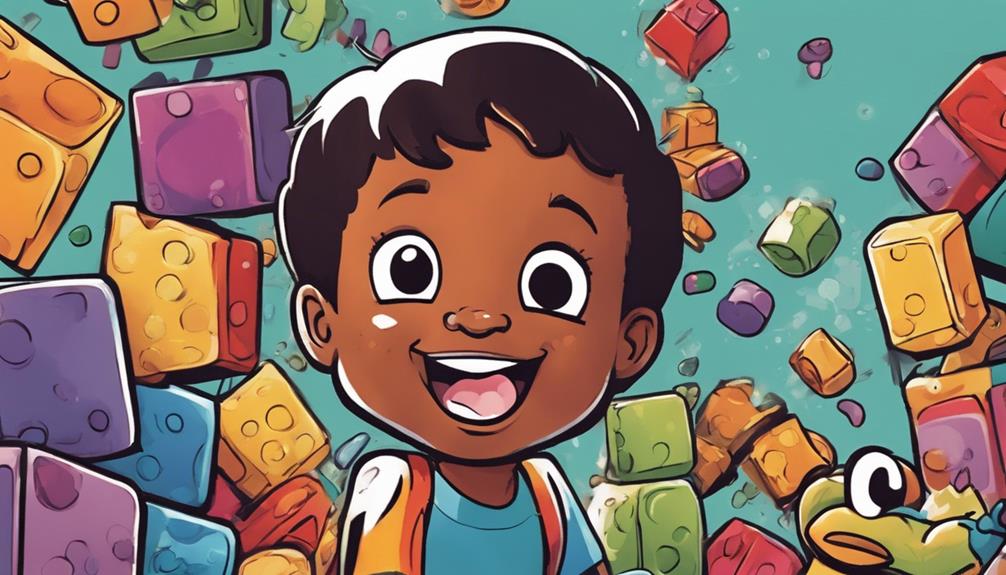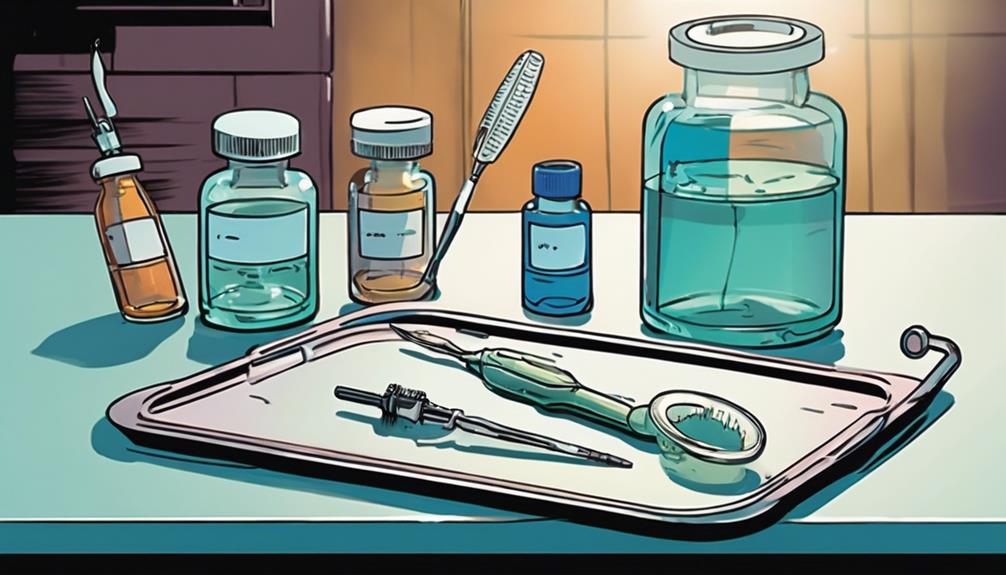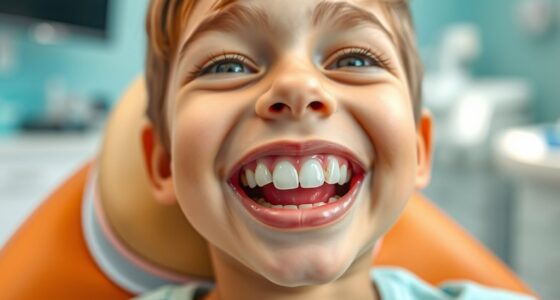Baby teeth fall out as a natural part of your child's growth. Around age 6, the roots of these teeth dissolve, making way for permanent ones to emerge. This process is vital for proper biting, chewing, and speech development. Losing teeth in a specific order—starting with the lower central incisors—helps maintain space for adult teeth. It's important to guarantee good dental care to prevent issues like decay that could lead to premature loss. By understanding this process better, you'll feel more confident in supporting your child's dental journey and promoting a healthy smile for the future.
Key Takeaways
- Baby teeth fall out naturally around age 6 as roots dissolve to make way for permanent teeth.
- The emergence of permanent teeth pushes against baby teeth, causing them to loosen and eventually shed.
- Tooth decay or trauma can lead to premature loss, disrupting the normal shedding cycle.
- Maintaining good dental hygiene and nutrition is essential to support healthy tooth development and prevent early loss.
Overview of Baby Teeth

Baby teeth, also called deciduous teeth, are vital for your child's biting, chewing, and speech development.
These primary teeth typically emerge between 5 and 12 months of age, totaling 20 by age 3. They're not just placeholders; they play a significant role in maintaining healthy spacing for permanent teeth that will come in later.
Around age 6, you'll notice your child's baby teeth begin to loosen. This process is natural and paves the way for adult teeth to grow.
It's important to care for these baby teeth to prevent cavities, as premature loss can disrupt dental alignment. If baby teeth fall out too early, it may lead to misalignment of the adult teeth that are forming.
The Process of Tooth Loss

As your child's baby teeth start to loosen, it's all part of a natural tooth replacement cycle.
The development of permanent teeth plays a key role in this process, influencing when and how baby teeth fall out.
Various factors can also affect tooth loss, making each child's experience unique.
Natural Tooth Replacement Cycle
The natural tooth replacement cycle begins around age 6 when children start losing their primary teeth to make way for permanent ones.
During this process, baby teeth loosen as the roots are gradually dissolved by specialized cells. You may notice your child's baby teeth wobbling and eventually falling out, making room for adult teeth to emerge.
This cycle is a normal part of growth, allowing adult teeth to take their place in proper alignment. The first teeth to go are usually the lower central incisors, and most children will have lost all their baby teeth by age 12.
By age 13, the entire cycle wraps up, with a full set of 32 permanent teeth in place, including the wisdom teeth.
Understanding this natural process can help ease any concerns you might've about tooth loss. It's important to recognize that losing baby teeth is a vital step in a child's development.
As those baby teeth fall out, they pave the way for strong, healthy adult teeth that will last a lifetime.
Role of Permanent Teeth
Permanent teeth play a significant role in your child's dental development, taking the place of the fallen baby teeth and ensuring proper alignment and spacing in the mouth. As primary teeth loosen and eventually fall out, they make way for permanent teeth, which are vital for several reasons:
- Alignment: Permanent teeth help maintain proper alignment, preventing issues like overcrowding or misalignment.
- Spacing: The loss of baby teeth creates the necessary space for the adult teeth to emerge correctly.
- Function: Adult teeth are designed to last a lifetime, providing essential functions like chewing and speaking.
As your child begins to lose their baby teeth around age 6, special cells work to dissolve the roots of primary teeth, allowing them to fall out naturally. The first to go are usually the lower central incisors, followed by the uppers.
Factors Influencing Tooth Loss
Several factors influence when and how baby teeth fall out, impacting the overall dental development of your child. Typically, baby teeth begin to loosen around age 6 as permanent teeth develop beneath them. As these adult teeth push upward, jawbone growth creates spaces, allowing baby teeth to fall out. Special cells in your child's body help dissolve the roots of baby teeth, leading to their eventual shedding.
However, issues like tooth decay or accidental trauma can lead to premature loss of baby teeth. This early loss can disrupt the timing of adult teeth eruption and may affect their alignment. If baby teeth fall out too soon, it can cause crowding or misalignment in the permanent teeth, which could lead to further dental problems down the line.
That's why monitoring your child's dental health during this change is essential. Ensuring they maintain good oral hygiene will help minimize tooth decay and support the proper eruption of permanent teeth. By being proactive, you can help foster a healthy mouth for your child's future smile.
Importance of Dental Care
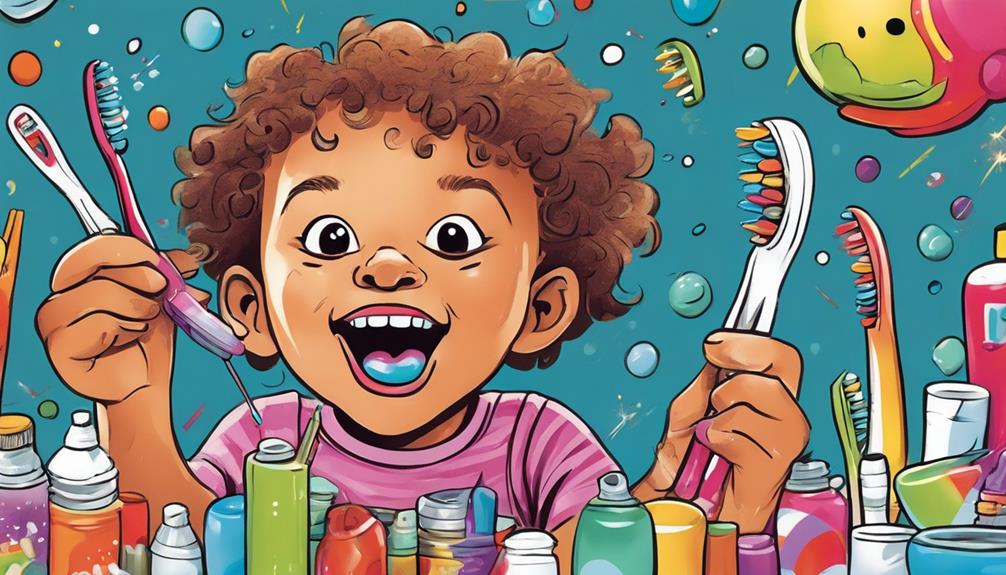
Maintaining proper dental care for baby teeth is vital to guarantee a healthy foundation for your child's future oral health. By focusing on good dental hygiene now, you can help prevent issues that might affect their permanent teeth later on.
Here are three key strategies to make certain your child's dental care:
- Regular Check-Ups: Schedule dental visits starting from their first birthday. This helps monitor the health of baby teeth and catch any potential problems early.
- Brushing and Flossing: Teach your child to brush their teeth twice a day and start flossing as they grow older. Good habits established early can prevent cavities and other dental issues.
- Healthy Eating: Encourage a balanced diet while limiting sugary snacks and drinks. Healthy eating habits are vital for maintaining the health of baby teeth and promoting overall oral health.
Factors Influencing Tooth Loss
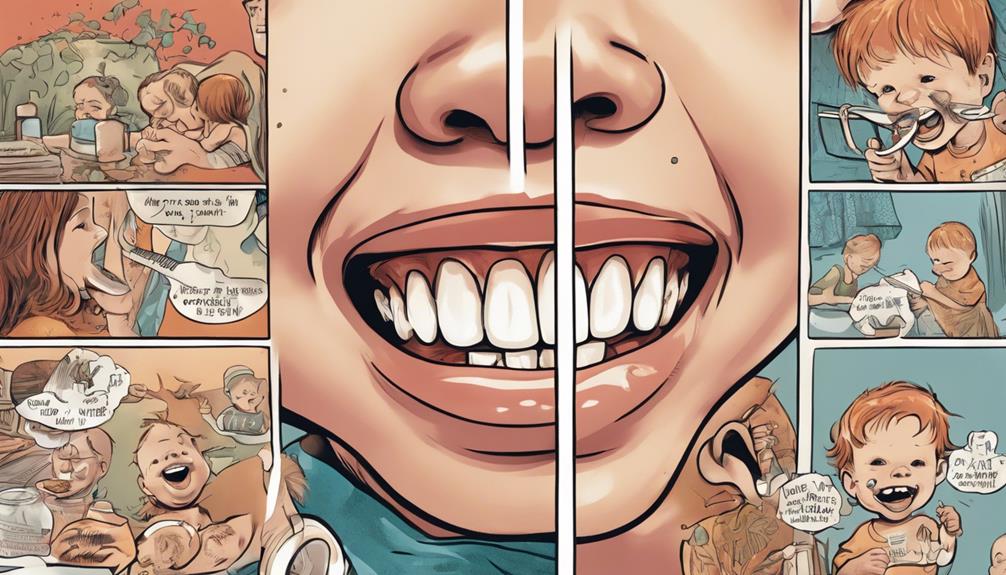
When it comes to tooth loss, several factors come into play.
You'll see how the natural development process, tooth decay, and accidental trauma can all influence when and how baby teeth fall out.
Understanding these factors can help you manage your child's dental health more effectively.
Natural Development Process
The natural development process of losing baby teeth is primarily influenced by the growth of your child's jaw and the emergence of permanent teeth. As your child's jaw grows, permanent teeth push against the roots of baby teeth, causing them to loosen and eventually fall out. This process typically begins around age 6 and continues until about age 12.
Here are three key factors that influence this natural development:
- Roots Dissolving: Special cells in the body work to dissolve the roots of baby teeth, allowing them to become loose as permanent teeth emerge.
- Sequence of Loss: Baby teeth usually fall out in a specific order, starting with the lower central incisors, followed by others, ensuring proper alignment for permanent teeth.
- Dental Hygiene and Nutrition: Good dental hygiene and proper nutrition can impact the timing and health of both baby teeth and the permanent teeth that replace them.
Understanding these factors can help you support your child's dental health as they shift from baby teeth to permanent teeth.
Ensuring proper care during this age is essential for a healthy smile!
Tooth Decay Impact
Tooth decay can greatly impact the timing and health of your child's baby teeth, potentially leading to early loss and alignment issues for their permanent teeth.
When cavities form due to poor dental hygiene and excessive sugary snacks, they can weaken baby teeth, making them more likely to fall out prematurely. This early loss can cause neighboring teeth to drift into the empty space, resulting in crowding and misalignment of those important adult teeth.
To help prevent tooth loss, establishing good oral hygiene practices from a young age is essential. Encouraging regular brushing and flossing can considerably reduce the risk of tooth decay, ensuring those baby teeth remain healthy until it's their time to shed naturally.
Regular check-ups with a dentist are also vital; they can identify and address any signs of decay early, preventing complications later on.
Accidental Trauma Effects
Accidental trauma, like falls or impacts during play, can greatly affect the timing and health of your child's baby teeth, leading to premature loss that disrupts their natural shedding process.
To better understand the impact of trauma on dental health, consider these key points:
- Loss of Baby Teeth: Injuries can cause baby teeth to become loose or even knocked out entirely, affecting their alignment.
- Crowding Issues: Early loss of baby teeth can lead to neighboring teeth drifting, resulting in crowding or misalignment of permanent teeth.
- Ongoing Monitoring: It's essential to monitor your child's dental health after an accident, as trauma can lead to infections or damage to the underlying adult tooth.
To minimize the risk of accidental trauma, you should supervise your child during play.
Encourage safe activities and teach them about caution to protect their baby teeth.
Remember that maintaining healthy baby teeth is important for proper development and alignment of their permanent teeth.
Tips for Healthy Teeth
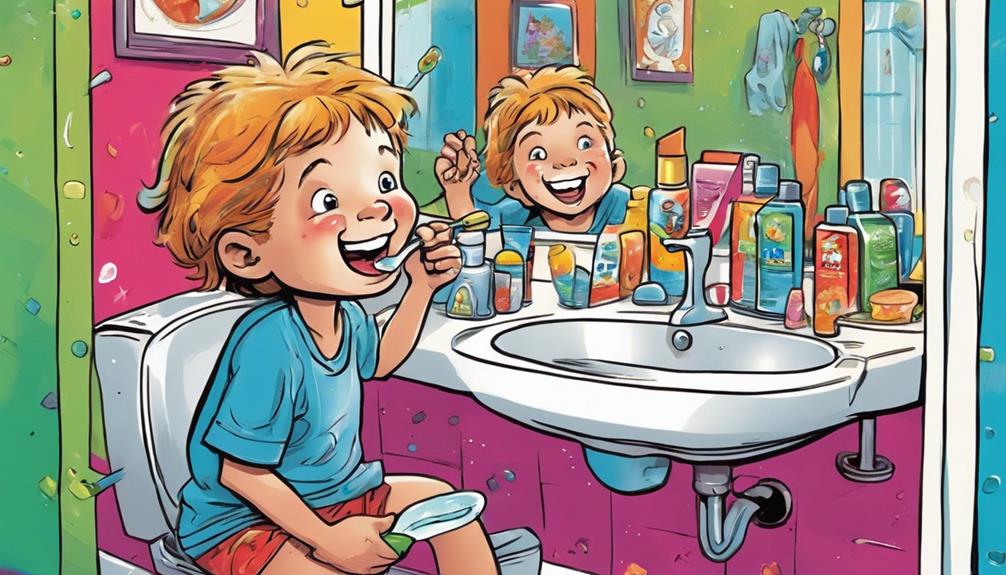
Brushing your teeth at least twice a day with fluoride toothpaste is a fundamental step in keeping your smile bright and cavity-free. It's vital to remove plaque, which can lead to gum disease and cavities. In addition to brushing, daily flossing helps reach those tricky spots between your teeth.
Limiting sugary snacks and drinks is key, as sugar contributes to tooth decay and can lead to premature loss of baby teeth. Instead, focus on a healthy diet rich in fruits, vegetables, and whole grains to support your oral health.
Regular dental check-ups every six months allow for early detection of dental issues and professional cleaning, ensuring strong teeth for the future. Instilling these habits in children promotes lifelong practices that benefit their oral health.
Here's a quick reference table to summarize these tips:
| Healthy Habit | Importance |
|---|---|
| Brush Twice a Day | Prevents cavities and plaque |
| Limit Sugary Snacks | Reduces risk of tooth decay |
| Regular Check-Ups | Maintains healthy teeth |
Monitoring Dental Development
Monitoring your child's dental development is vital as they shift from baby teeth to permanent ones, typically starting around age 6. This change can be exciting, but you need to keep an eye on several key factors:
- Tooth Loss Order: The first teeth to lose are usually the lower central incisors, followed by the upper central incisors. Tracking this order helps guarantee proper dental progression.
- Eruption Patterns: It's important to watch for any delays in tooth eruption. Early detection of issues can prevent complications, such as crowding of permanent teeth.
- Regular Check-ups: Schedule regular dental check-ups to monitor both baby teeth and the development of permanent teeth. These visits can help catch any potential problems early.
Frequently Asked Questions
What Triggers Baby Teeth to Fall Out?
The triggers for baby teeth falling out include the growth of permanent teeth beneath them, which pushes against the roots. As roots dissolve, the baby teeth loosen, leading to their eventual detachment and replacement. Identifying baby teeth that are ready to fall out can be done by gently wiggling them and observing any movement. Once a baby tooth becomes noticeably loose, it is important to encourage the child to continue wiggling it to aid in the natural process of detachment. It’s also important to reassure the child that losing their baby teeth is a normal and exciting part of growing up.
Why Do Baby Teeth Fall Out Without Roots?
Isn't it fascinating? Baby teeth lack roots because your body strategically dissolves them as adult teeth grow. This clever process guarantees they can easily fall out, making way for the stronger, permanent set beneath.
Why Do Baby Teeth Fall Out in Evolution?
You're witnessing a remarkable evolutionary adaptation. Baby teeth falling out allows your jaw to grow properly, ensuring that larger permanent teeth fit correctly, enhancing your ability to chew and speak effectively throughout adulthood.
Why Are My Baby Teeth Falling Out so Fast?
Your baby teeth are like leaves in autumn, falling quickly as new growth pushes through. If they're falling out too fast, it could be due to decay or accidents. Keep an eye on your dental health!
At What Age Do Children Typically Lose Their Baby Teeth?
Children typically start to lose their baby teeth around the age of 6 or 7, but this can vary. A baby teeth falling out guide can help parents understand the process and what to expect as their child’s primary teeth naturally make way for their permanent ones.
Is Delayed Baby Teeth Loss Related to the Timing of Baby Teeth Coming In?
Understanding delayed baby teeth is important for parents to ensure their child’s dental health. It’s natural for the timing of baby teeth coming in to impact when they are lost. However, if baby teeth don’t fall out in the expected timeline, it’s important to consult a dentist to address any potential issues.
Is the Late Arrival of Baby Teeth Related to Them Falling Out?
The late arrival of baby teeth can be concerning for parents, but it doesn’t necessarily mean they will fall out late as well. There are various reasons why baby teeth coming late, such as genetics, premature birth, or certain medical conditions. It’s important to consult a pediatric dentist for proper evaluation.
Is It Normal for Dogs to Lose Baby Teeth Similar to Humans?
Yes, it is normal for dogs to lose baby teeth, just like humans. The process is called “deciduous tooth loss” in dogs, during which baby teeth dogs lose are replaced by adult teeth. This usually happens between 3 to 6 months of age. It’s important to monitor this process for any issues.
Conclusion
In summary, understanding why baby teeth fall out helps you appreciate this natural process.
Did you know that kids typically lose their first tooth around age six? This milestone can stir up feelings of nostalgia as you watch your child grow.
By prioritizing dental care and monitoring their development, you can guarantee a healthy change to adult teeth.
Embrace these moments, and remember that every lost tooth is a step toward a brighter, healthier smile!
